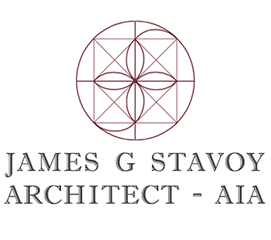Philosophy
 I am privileged to listen to my clients’ dreams about their living spaces, and working together, transform those dreams into the reality of architectural experience. Ideas, concepts, fantasies, and wishes are all on the design table for exploration and discovery to enable the design solution to evolve naturally and organically incorporating aesthetic, functional, environmental, and budgetary worlds in a final design.
I am privileged to listen to my clients’ dreams about their living spaces, and working together, transform those dreams into the reality of architectural experience. Ideas, concepts, fantasies, and wishes are all on the design table for exploration and discovery to enable the design solution to evolve naturally and organically incorporating aesthetic, functional, environmental, and budgetary worlds in a final design.
This opportunity to create one’s space incurs responsibility and sensitivity to the realities and dictates of planning and building codes, neighborhood guidelines and character, and the use of sustainable and ecological materials and methods throughout the building process.
 Regardless of the size and scope of work, all our projects are regarded with the same enthusiasm for the difference they will make in the lives of their owners and the fundamental solutions they will provide to the issues of light and space, connection to nature, and programmatic requirements.
Regardless of the size and scope of work, all our projects are regarded with the same enthusiasm for the difference they will make in the lives of their owners and the fundamental solutions they will provide to the issues of light and space, connection to nature, and programmatic requirements.
I encourage a participatory design process that draws upon the expertise of the client, the architect, the builder, the crafts person, and the artist to create a unique architectural project whose realization is rivaled only by the excitement of the design process that made it possible.
About My Logo Design

I have been asked many times over the years for the source of inspiration for the design of my mandala shaped logo. The combination of geometric shapes – square within a circle, eight equal sections, four petals of the flower, two halves of the yin/yang – symbolically represent many aspects of my own life experiences.
Growing up in mostly rural north central Pennsylvania, it was common for farmers in the “Pennsylvania Dutch” tradition to place geometric patterns known as “hex signs” on their barns to ward of evil spirits. Later, in architecture school at Penn State, studies were completed on the utopian planned circular community of San Leucio, Italy.
After establishing my architectural practice in San Francisco, I shortly thereafter began working with a group of Benedictine monks on the design of a monastery. The beautiful color and geometry of the stained glass rose windows of the Romanesque and Gothic cathedrals were discovered in my research of monastic realms. The rose window cycle was complete after its design became the final class project for my “Architects in the Schools” experience at St. Dominick’s School 5th grade class in San Francisco.
Carl Jung writes:
“The squaring of the circle is one of the many archetypical motifs which form the basic patterns of our dreams and fantasies. But it is distinguished by the fact that it is one of the most important of them from the functional point of view. Indeed, it could even be called the archetype of wholeness … they express the idea of a safe refuge, inner reconciliation and wholeness.”
In the ancient Buddhist world, the mandala form was considered a blueprint for an ideal world. My mandala logo design, with its embedded yin/yang symbol, is my own simple expression and desire for beauty, harmony, and alignment in my work and in my life.

